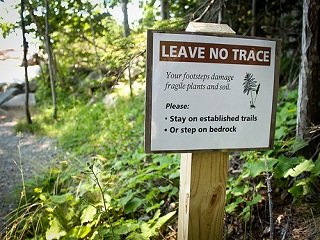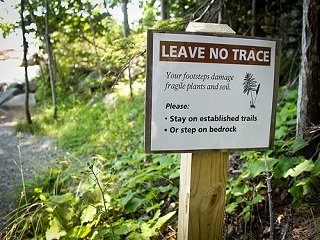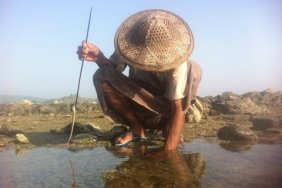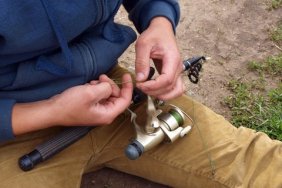 As stewards of this planet and enthusiasts of the excitement, joy, and activities that nature can provide, it is our duty to do what we can to maintain healthy ecosystems whenever we set foot onto the trail. There are a number of seemingly insignificant, careless things that people unknowingly do while on a camping trip or hike that can have a big impact on the environment. Awareness of this fact has been increasing throughout the years and today, there are several organizations that have been established to educate outdoorsmen throughout the country on what we can do to ensure that, when we head out, we Leave No Trace.
As stewards of this planet and enthusiasts of the excitement, joy, and activities that nature can provide, it is our duty to do what we can to maintain healthy ecosystems whenever we set foot onto the trail. There are a number of seemingly insignificant, careless things that people unknowingly do while on a camping trip or hike that can have a big impact on the environment. Awareness of this fact has been increasing throughout the years and today, there are several organizations that have been established to educate outdoorsmen throughout the country on what we can do to ensure that, when we head out, we Leave No Trace.
Employing a “Leave No Trace” mentality while enjoying the outdoors can include anything from refraining from dropping a small piece of trash to even stepping off the path and wading through the brush. For campers, the first step in the process is making camp only in designated areas, such as campgrounds or campsites, and use established trails. Backcountry campers should be sure to pitch their tents in flat, open areas where there is no risk of damaging any surrounding vegetation. Trampling some bushes or chopping down saplings to make room for a tent may not seem like a big deal, but such harsh treatment or increased foot traffic can create barren areas and destroy the plant-life permanently.
As far as campsites go, it’s also important to refrain from digging a lot of large holes or trenches, building large fires, or chopping down tree limbs or even fallen timber for firewood. Furthermore, try to dump any waste or used water as far from a stream, lake, or pond as possible (at least 200 feet to be safe). Also—this may be gross to some, but it’s important—as far as human waste is concerned, if at all possible, the first option is to carry it out with you and dispose of waste in the trash. If this isn’t a viable option, however, a hole around ten inches deep and 200 feet from any nearby water source is your next option.
When it comes to trash, it can seem easy to simply toss a wrapper or plastic bag into the bushes when no one’s around. However, wrappers and bags aren’t bio-degradable and can impede the biology of a given forest by preventing plants from growing or acting as choking or physical hazards for animals. It isn’t difficult to maintain the mindset to “pack it in, pack it out.” All this really means is that whatever you bring with you—bags, wrappers, etc—you take with you when you leave.
One thing to consider is the wildlife that calls the forests home, and how we treat those animals. After all, we are visitors to their home and we should respect them as such. This means observing them from afar, especially during seasons when nesting or baby animals are prevalent, keeping from making loud noises, and storing food securely so animals won’t be tempted to associate humans with food.
I could toss a lot of clichés your way, regarding doing our part to reduce our carbon footprint on the woods we love to visit for camping or hiking trips, but as outdoorsmen, I’m sure you’ve heard them all. All I’ll tell you is that, if we want to continue to enjoy the outdoors, and ensure that future generations can as well, it’s our job to maintain a diligent and considerate practice of practicing a few simple acts to accomplish this goal. After all, we don’t want our children to have to tell their children stories about trees.
For more information on the Leave No Trace movement, including arranging a seminar or attending a class, contact the organization at 800-332-4100, or visit www.lnt.org.








